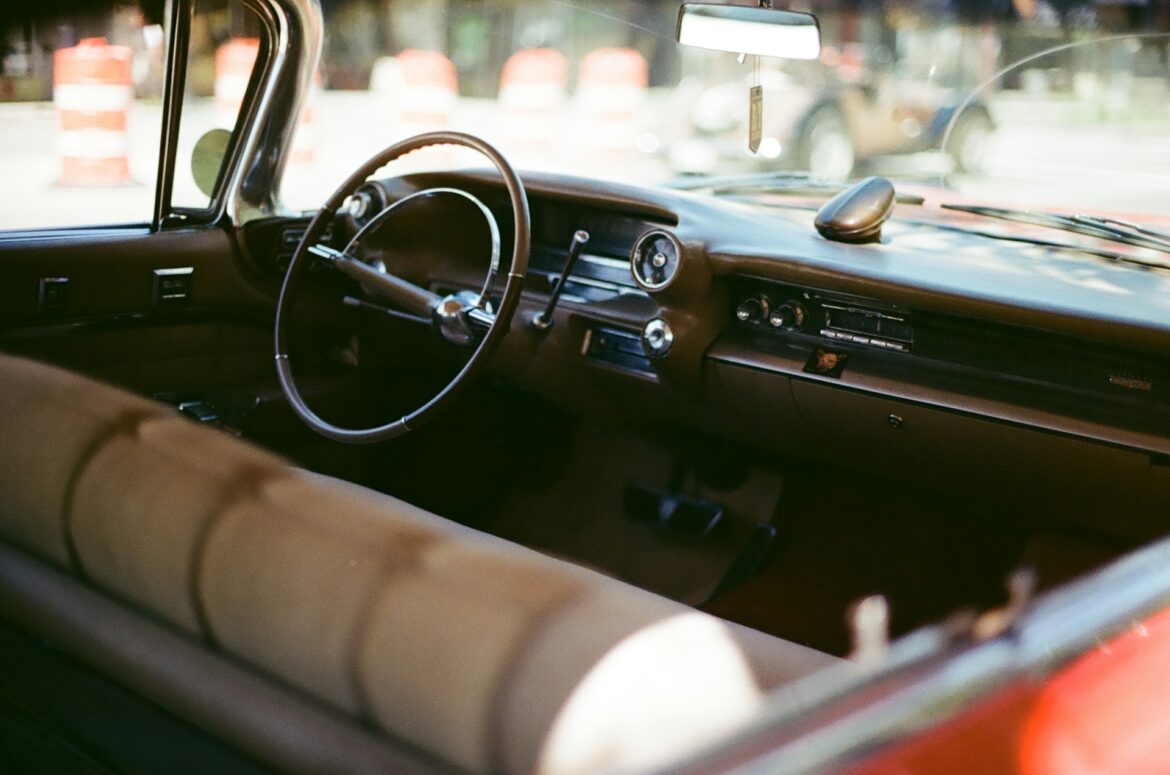Latvia has a deep appreciation for vintage and classic vehicles that reflects pride in design, mechanics, and nostalgia. The country’s love for old cars goes beyond admiration—it’s about preserving history, culture, and craftsmanship. From cobblestone streets in old towns to scenic countryside roads, vintage cars roll with charm and grace. Latvia’s vintage car rallies offer enthusiasts the chance to celebrate beauty on four wheels while honoring the past. Whether you’re a collector or a curious spectator, the sights and sounds of these vehicles will transport you. Events attract drivers from across Europe, creating a vibrant atmosphere of shared passion. Here, every rally is more than a race—it’s a moving museum on wheels.
What to Expect at Latvia’s Vintage Car Rallies
Classic car events in Latvia offer much more than polished chrome and roaring engines. These gatherings often include exhibitions, competitions, historical storytelling, and parades. Drivers dress in period attire to match their vehicles, adding flair and authenticity to the event. Cars are judged on originality, condition, and historical relevance, with prizes awarded in several categories. Enthusiasts swap stories, trade parts, and discuss restoration tips. The environment is family-friendly, filled with music, food stands, and guided activities. These events blend mechanical mastery with vintage charm and cultural celebration. Visitors don’t just look at history—they hear, feel, and ride alongside it.
Expect to see at Latvian vintage car events:
-
Car exhibitions and style competitions
-
Scenic countryside or city parades
-
Period costumes and vintage accessories
-
Restoration stories from collectors
-
Food, music, and family-friendly zones
Top Vintage Car Events in Latvia
Latvia hosts several major rallies and shows that draw crowds of vintage car lovers every year. These events often feature classic models from the Soviet era, Western Europe, and even rare pre-war vehicles. Many take place during spring and summer when roads and weather are ideal for showcasing polished beauties.
Notable vintage car events include:
-
Retro Rīga – Held annually in Riga, this event features parades, competitions, and hundreds of historic cars.
-
Classic Car Festival in Sigulda – Combines scenic drives with exhibitions in the picturesque Gauja River Valley.
-
Youngtimer Rally Latvia – Focuses on 1970s–1990s models, including old Volvos, BMWs, and Ladas.
-
Auto Retro Jelgava – Showcases restored Soviet classics, from Moskvitch to GAZ Volga, alongside rare Western imports.
-
Baltic Classic Rally – A trans-Baltic event that includes Latvia on its route with participants from all over Europe.
Each event has its unique vibe, offering both visual delight and a true sense of automotive brotherhood.
Popular Classic Cars Seen in Latvia
Many of the classic cars seen at Latvia’s vintage car rallies reflect the country’s unique automotive history. During the Soviet era, Latvians drove brands like ZAZ, VAZ, Volga, and Moskvitch, which now appear fully restored at rallies. You’ll also find rarer Western European cars from Mercedes-Benz, BMW, and Volvo—often restored with care by passionate collectors. Some Latvian-made vehicles, like the RAF minibus (built in Jelgava), carry local pride and historical importance. These cars are not just machines—they’re stories of survival, adaptation, and love for the craft.
Common vintage cars at Latvian rallies:
-
VAZ-2101 “Zhiguli”
-
GAZ Volga M21 and M24
-
RAF-2203 Latvija
-
Moskvitch 412
-
Wartburg and Trabant (East German classics)
-
Western imports like old BMW E30s, Volvo Amazons, and vintage Mercs
Restoration and Community: The Soul of Classic Car Culture
Restoring a vintage car is no easy task—it’s an act of patience, skill, and devotion. Across Latvia, restoration garages and hobbyists breathe new life into rusted relics. Some work alone, others form clubs and associations to share resources, knowledge, and inspiration. Events like Retro Rīga aren’t just for showing off—they’re milestones in years-long restoration journeys. Families often work together, passing down mechanical skills and car history through generations. Latvia’s classic car community is tightly-knit and fueled by passion. Everyone, from amateur tinkerers to veteran engineers, plays a role in preserving this mobile heritage.
Elements that define Latvia’s vintage car community:
-
Restoration clubs and meet-ups
-
Parts exchanges and online forums
-
Intergenerational knowledge sharing
-
Car-themed workshops and training
-
Emotional connections to each vehicle’s story
Driving the Latvian Landscape in Style
The joy of owning a vintage car in Latvia is amplified by the country’s stunning driving routes. From the coastal roads of Jurmala to the rolling hills near Sigulda, drivers enjoy both beauty and breeze. Latvia’s vintage car rallies often include scenic tours through historical towns, castles, and rural landscapes. These drives celebrate the bond between man, machine, and nature. Along the way, locals cheer from sidewalks and countryside cafés, turning the rally into a community event. It’s more than nostalgia—it’s celebration through motion.
Scenic rally routes often include:
-
Riga to Jurmala coastal route
-
Sigulda to Cēsis via Gauja National Park
-
Rundāle Palace countryside loop
-
Ventspils coastal cruise
-
Liepāja to Kuldīga historic trail
The Tourism Boost of Vintage Car Events
Vintage car rallies are more than just niche gatherings—they also give a major boost to local tourism. Visitors often extend their stay to explore nearby attractions, heritage sites, and regional cuisines. Towns hosting Latvia’s vintage car rallies see increased hotel bookings, restaurant visits, and cultural interest. Event organizers collaborate with tourism boards to create rally routes that pass by castles, museums, and scenic landmarks. International guests arrive from neighboring countries, combining their love for cars with a cultural getaway. The rallies spotlight Latvia’s charm, making them valuable not just for enthusiasts but for the tourism economy. In this way, vintage cars help drive discovery—literally and figuratively.
Tourism benefits of vintage car events:
-
Increased travel to rural and historical towns
-
Exposure to local crafts, food, and culture
-
Promotion of Latvia as a vintage tourism destination
-
Support for small hotels and local businesses
-
Integration with heritage sites and festivals
Photography and Visual Storytelling
Vintage car rallies are a paradise for photographers and content creators. The timeless designs, detailed chrome work, and scenic rally routes make every event visually compelling. Many photographers attend solely to capture the unique blend of history and motion. Period outfits and vintage accessories add layers of style to every frame. From sleek hood ornaments to wide countryside shots, Latvia’s vintage car rallies offer endless creative material. Drone footage, car portraits, and candid mechanic moments often go viral on social platforms. Enthusiasts showcase restoration journeys online, turning every rally into a gallery of nostalgia. It’s not just about engines—it’s about emotion told through visuals.
Popular photography subjects at events:
-
Chrome detailing and custom paint jobs
-
Candid shots of drivers and restorers
-
Rally cars against Latvian landscapes
-
Historic number plates and accessories
-
Before-and-after restoration images
Involving the Next Generation
Keeping the passion for vintage cars alive means involving younger generations in meaningful ways. Many Latvian clubs and events now include youth programs focused on mechanics, design, and automotive history. Some rallies hold junior co-driver categories or offer guided educational tours for children and teens. Parents often introduce their kids to restoration projects, passing on both skill and passion. Schools and technical colleges partner with car clubs for workshops, internships, and competitions. The goal is not just to preserve vehicles—but to spark curiosity in the hands that will care for them next. Latvia’s vintage car rallies play a vital role in inspiring future gearheads.
Ways youth get involved:
-
Restoration apprenticeships with local car clubs
-
School partnerships for automotive workshops
-
Family rally team entries
-
Youth photo contests and art projects
-
Technical training through vocational schools
A Baltic Brotherhood: International Participation
Latvia’s vintage car scene doesn’t stop at the border. Enthusiasts from Estonia, Lithuania, Finland, Poland, and even Germany regularly attend Latvian events. Some rallies, like the Baltic Classic Rally, span multiple countries and involve international checkpoints. These events strengthen regional ties and promote cultural exchange. Drivers share stories, compare models, and discuss how historical cars survived under different systems. Cross-border clubs often visit Latvia for scenic drives and restoration showcases. International participation elevates the prestige of Latvia’s vintage car rallies, transforming them into key events on the European vintage motoring calendar.
Countries commonly represented at Latvian car rallies:
-
Estonia and Lithuania
-
Finland and Sweden
-
Germany and Poland
-
Belarus (in some cases)
-
UK and Western European guests on Baltic tours
Latvia’s vintage car rallies offer more than entertainment — they are living testaments to engineering, history, and identity. Every model on display tells a story, from Soviet resilience to Western admiration. The love for classic vehicles brings people together — across generations, countries, and cultures. These events continue to grow in popularity, thanks to passionate drivers, dedicated restorers, and communities that value history in motion. Whether you own a vintage car or simply love the roar of old engines, Latvia’s vintage car rallies promise unforgettable moments filled with charm, style, and heartfelt nostalgia.

